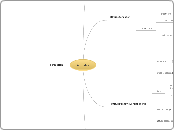Attitudes
what are attitudes?
Eagly & Chaiken, 1993
multi-component perspective
cognitive
affective
behavioural
attitude formation
how do components form a summary
consistency
negative bias
accessibility
formed from
experience
Zajonc 1968
mere exposure effect
classical conditioning
Staats & Staats 1962
reinforcement/punishment
e.g. maths praise - +ve maths attitude
observational learning
learn from family/culture
attitude/behaviour relationship
LaPiere 1934
levels of specificity
Newcomb 1992
Davidson & Jacard 1979
time
less accurate when gap between attitude measurement + behaviour
Fishbein & Coombs 1974
opinion polls less accurate month before than week before
attitude strength
caused by
acquiring more info
Kallgren & Wood 1986
personal involvement
Sivacek & Crano 1982
attitude accessibility
Fazio & Williams 1986
Reagan study
attitudes guide behaviour
without much thought
considered intentions
TRA
FIshbein & Ajzen 1975
TPB
